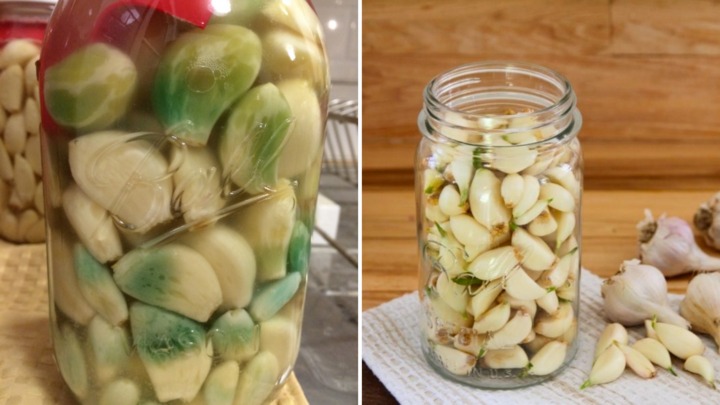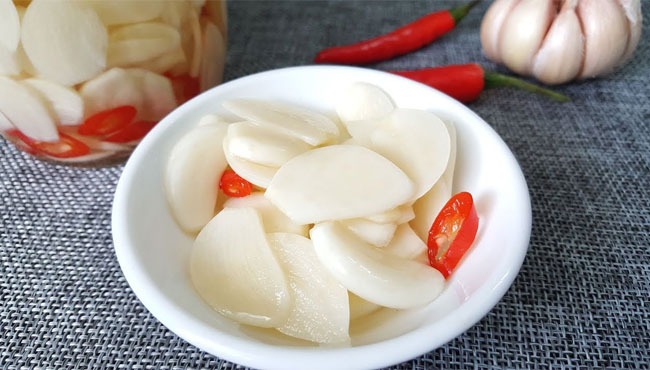Pickled garlic is a popular condiment often paired with dishes like noodles and vermicelli, and is also used in various dipping sauces. It not only enhances flavors but also offers several health benefits. However, sometimes pickled garlic turns green, which can be concerning for consumers. So, what causes this color change, and is it safe to consume?
Why Does Pickled Garlic Turn Green?
The green color of pickled garlic is a result of a natural chemical reaction between the compounds in garlic and acetic acid in vinegar. This is a normal occurrence and does not indicate spoilage or unsafe product. The green hue is caused by the reaction between the natural sulfur in garlic and traces of metals such as copper, iron, or other compounds in the vinegar that induce a green color.
Therefore, even if your pickled garlic turns green, it is still safe to eat. To avoid this discoloration, you can try reducing the amount of vinegar used or opt for a higher-quality vinegar for pickling.

The green color of pickled garlic is due to a natural chemical reaction between the compounds in garlic and acetic acid in vinegar.
Pickled garlic is known to offer significant health benefits, such as:
Boosting the immune system: Pickled garlic contains antioxidants and antibacterial compounds, strengthening the immune system and reducing the risk of infections.
Aiding digestion: It balances gut bacteria, supports digestion, and alleviates symptoms of indigestion, bloating, and nausea.

Pickled garlic is packed with antioxidants and antibacterial compounds, boosting the immune system and fighting off infections.
Antibacterial and antiviral properties: Garlic inhibits the growth of harmful bacteria and viruses in the body.
Supporting the circulatory system: Pickled garlic improves blood circulation, reducing the risk of blood clots and promoting cardiovascular health.
Lowering cholesterol levels: Garlic helps decrease bad cholesterol (LDL) and increase good cholesterol (HDL), thus maintaining cardiovascular health.\
How to Make Delicious Pickled Garlic That Stays Clear of the Green Hue
To make tasty pickled garlic that avoids the green discoloration, follow these steps:
Selecting garlic: Choose older garlic bulbs with dry and unwrinkled outer skins. Peel the garlic cloves before pickling. For easier peeling and to avoid tears, soak the garlic in water for 20 minutes beforehand.
Gathering ingredients: You will need the following ingredients for pickling garlic:
GarlicVinegarSaltSugarChopped chili peppers (green and red bird’s eye chilies).Preparing the pickled garlic:
Choose a clean, dry ceramic jar.Arrange the garlic and chilies in alternating layers in the jar, filling it up.Pour in enough vinegar to submerge the garlic and chilies.Tighten the lid and store the jar in a cool, dry place for two days. Afterward, move it to the refrigerator and enjoy your pickled garlic as desired.Note: Use clean chopsticks or spoons to remove garlic or chilies from the jar to prevent contamination.




































